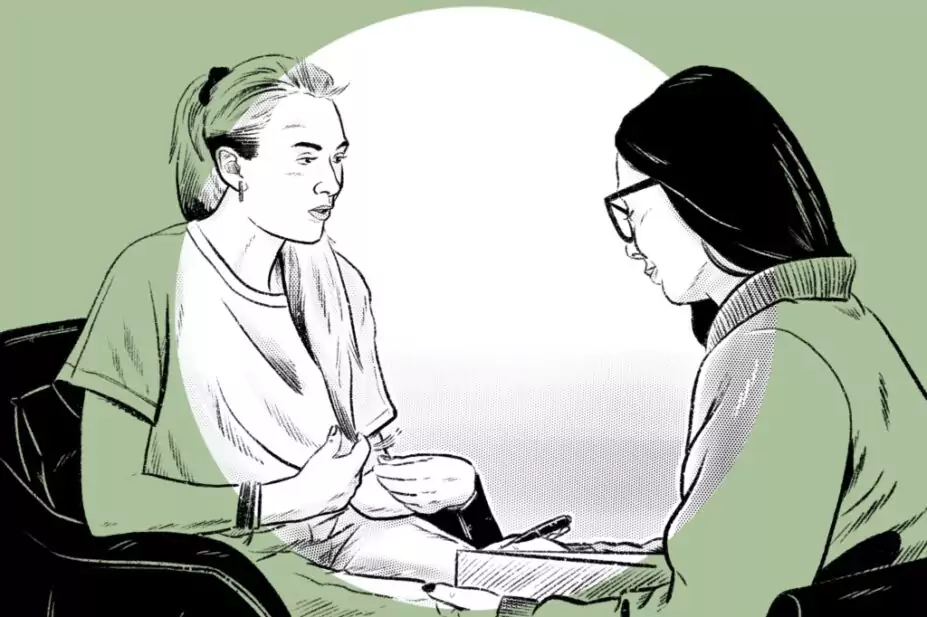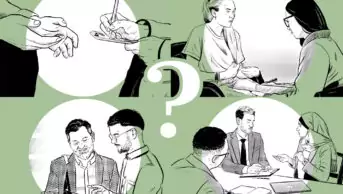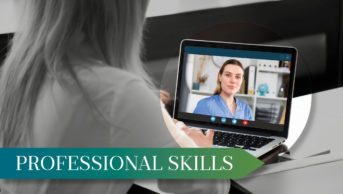
Wes Mountain/The Pharmaceutical Journal
By the end of this article, you should be able to:
- Outline the co-dependent components of an effective consultation;
- Appreciate the need for individualisation of a consultation and some of the challenges that may present;
- Identify how you can develop your own consultation style for your prescribing role.

RPS Competency Framework for all prescribers
This article aims to support the development of knowledge and skills related to the following competencies:
Domain 1: Assess the patient (all statements)
Domain 2: Identify evidence-based treatment options available for clinical decision making (2.3)
- Assesses the risks and benefits to the patient of taking or not taking a medicine or treatment.
Domain 3: Present options and reach a shared decision (3.2, 3.6)
- Considers and respects patient diversity, background, personal values and beliefs about their health, treatment and medicines, supporting the values of equality and inclusivity, and developing cultural competence;
- Explores the patient’s/carer’s understanding of a consultation and aims for a satisfactory outcome for the patient/carer and prescriber.
Domain 5: Provide information (5.1, 5.2, 5.3, 5.4)
- Assesses health literacy of the patient/carer and adapts appropriately to provide clear, understandable and accessible information;
- Checks the patient’s/carer’s understanding of the discussions had, actions needed and their commitment to the management plan;
- Guides the patient/carer on how to identify reliable sources of information about their condition, medicines and treatment;
- Ensures the patient/carer knows what to do if there are any concerns about the management of their condition, if the condition deteriorates or if there is no improvement in a specific timeframe.
Introduction
Consultation has been defined as “a process for converting a problem into a plan”[1]. Therefore, a consultation can be seen as a conversation with a purpose between the healthcare professional and relevant parties, for example a patient and/or a carer. Prescribers need the skills to effectively extract relevant information from an individual, make a probable diagnosis and reach a shared decision with the individual about the next steps. This plan may involve one or more of the following: lifestyle or self-care advice, reassurance, prescribed treatment (medicines or social prescribing), further investigations, or a referral. Therefore, effective consultations require the healthcare professional to be flexible to respond to the cues and needs of the individual and to utilise good communication skills.
This article provides an overview of the consultation. It is recommended that you read this article in conjunction with the following resources from The Pharmaceutical Journal:
- ‘Communication techniques for prescribing’;
- ‘Principles of person-centred practice for prescribing‘;
- ‘How to build and maintain trust with patients‘;
- ‘How to demonstrate empathy and compassion in a pharmacy setting‘.
To help further expand your prescribing skills, additional related articles are linked throughout and further reading is recommended at the end of the article. You will also be able to test your knowledge by completing a short quiz.
Types of consultation
Individuals and/or carers present for a consultation for various reasons; for example, an acute presentation of symptoms in primary care (e.g. GP practice, community pharmacy), a review of chronic disease management within secondary care, or an online triage enquiry to NHS 111. These consultations may be undertaken face-to-face or remotely utilising a video link, telephone or other technologies.
What makes an effective consultation?
An effective consultation requires the individual to feel comfortable with the prescriber, for them to feel confident to disclose issues and concerns. Prescribers need to be able to effectively build a rapport with individuals, show empathy and act in a non-judgmental manner. To do this, they need to demonstrate an appreciation of the individual’s health beliefs, their health behaviours, their culture and the effect the condition is having on their life. Each prescriber will develop their own consultation style, based upon their own personal and professional experiences and attributes.
If communication is poor, there is a risk that the individual will be dissatisfied with the consultation, preventing all relevant information from being gathered, which may result in a misdiagnosis, or an error being made[2,3].
Consultation models
When developing a consultation style, it may be useful to consider different consultation models that illustrate the different components of the consultation. These models have developed over time, acknowledging the importance of the patient, their health beliefs and behaviours within the consultation. Models have also been constructed for specific types of consultation, such as breaking bad news[4]. Some examples of consultation models commonly used in healthcare are described in Table 1[4–6]. Although there are variations between them, consultation models generally comprise these following elements:
- Gathering information, including history taking and patient assessment/examination;
- Processing information, including diagnostic reasoning and decision making;
- Sharing information, including shared decision making and safety netting;
- Consideration and integration of the practitioner’s behaviours and communication skills.
Patients will vary in their health beliefs, interest and capacity to participate in consultations. When applying the principles of consultation models, the healthcare professional needs to be flexible and reactive to the individual’s verbal (e.g. tuts and sighs) and non-verbal cues (e.g. body language and emotions). Therefore, models should be utilised as a support mechanism rather than a fixed script. Following a model too rigidly could impact building a rapport, restrict flexibility and the ability to provide a person-centred approach.
Some consultations are more challenging than others; for example, when addressing sensitive issues, language barriers, cognitive difficulties and patient behaviours, such as aggressive or emotional responses. It is important that prescribers are prepared for such challenges[7]. How to approach difficult conversations is explored in greater depth in ‘Approaching difficult situations: how to have challenging conversations’.
Healthcare professional readiness
Prescribers must be aware of their own wellbeing and preparedness to undertake a consultation. To ensure they can actively listen and undertake clinical reasoning, they should not be distracted, for example by the previous patient or affected by external factors. They should always ask themselves if they are ready for the next consultation[5,8]. Allocating time between appointments and taking regular refreshment breaks is advised to help achieve this.
Healthcare professionals should also be aware of how they are presented in terms of their dress and demeanour and how this may impact consultations and patients’ potential responses to them.
Healthcare professionals also need to continually reflect on their own competence and knowledge and consider whether they are up to date with developments in their chosen scope of practice, and therefore able to provide the most appropriate care. Implementing reflective practice can improve decision-making and support personal and professional development. Useful strategies are explored in greater depth in ‘Practising reflection in pharmacy’.
Preparing for a consultation
Before each consultation, the healthcare professional needs to ensure that the room or space is ready for the next patient. The layout of the consultation space, its accessibility, seating, facilities, cleanliness, lighting and heating are all points to consider. There should be no physical barriers to communicating with the patient; for example, consider the placement of the computer. A selection of written materials or resources, in a range of languages appropriate for the local population, should also be available.
Once the healthcare professional has identified which patient they are seeing, they should familiarise themselves with the patient, if possible, for example by recalling any previous appointments and their outcomes.
Structure of the consultation
Initial observations
From the first time a healthcare professional sees a patient, they will begin gathering information through observation about their mobility, speech and demeanour. In some settings, professionals purposely go to greet the individual to start this information-gathering process. Observations provide rich data that can support or refute information that may be gathered from talking to patients[9]. A useful mnemonic to guide initial observations is ‘SOMETEAMS’ (see Box 1[10]).
Box 1: Focus in practice — ‘SOMETEAMS’ mnemonic to guide initial observations
Symmetry – are the body and face symmetrical?
Old – does the patient look their age?
Mental acuity – is the patient alert, confused, agitated or inattentive?
Expression – does the patient appear to be ill, in pain or anxious?
Trunk – is the patient lean, stocky, obese or barrel-chested?
Extremities – does the patient have clubbed fingers, joint abnormalities or oedema?
Appearance – is the patient clean and appropriately dressed?
Movement – how is the patient’s posture, gait and co-ordination?
Speech – is the patient’s speech relaxed, clear, coherent and appropriate? Does it sound stressed?
Opening the consultation
It is essential to build rapport with the patient as quickly as possible by giving them undivided attention[1,8]. When greeting the patient, the healthcare professional should have open body language (e.g. sitting upright with an open posture and a smile). To start the conversation, the healthcare professional should introduce themself to the individual and ask them how they would like to be addressed[11]. This allows them the opportunity to clarify if they would like to be addressed by their title or their first name, as well as allowing them to clarify their pronouns.
Many patients bring someone with them to consultations. If someone is present with the patient, it is important to ascertain who they are, if the patient is happy for them to stay in the consultation and what roles that person has in the care of the patient, such as helping them with their medication. For example, you may say “Who have you brought along with you today? I am very happy to speak to you both or would you prefer if we spoke initially and then brought in your companion?”
If the healthcare professional is likely to see the patient regularly, it may be useful to get to know the person by asking them about their home circumstances, job and interests[8]. Taking an interest in them as an individual may help to develop a rapport and relationship, which often means that they feel more comfortable speaking openly.
Starting the consultation with an open question, such as “What brings you here today?” or “What would you like to discuss with me today?” provides the opportunity for the individual to express the reason for attendance in their own words. Ideally, the practitioner should not interrupt, as evidence has demonstrated that patients usually speak for less than two minutes[12,13]. By allowing them to express themselves, the healthcare professional identifies any barriers to verbal communication, such as language, hearing or speech difficulties, and can think of strategies to be adopted to address these.
Using open questions allows for the identification of the patient’s agenda. If the patient has brought someone else into the consultation, it can be useful to explore that person’s agenda at the start of the consultation too. This may avoid interruptions by the person throughout the consultation. Several agendas may therefore be identified, and it may then be evident that everything may not be addressed within the time allocated for the consultation, and so some may need to be addressed subsequently. Working together, the priorities for the consultation can be agreed upon.
Case in practice
 Patient profile: Polina, a patient aged 45 years, presented to the community pharmacist with a urinary tract infection. The pharmacist was able to treat her under the Independent Prescribing Service (Wales).
Patient profile: Polina, a patient aged 45 years, presented to the community pharmacist with a urinary tract infection. The pharmacist was able to treat her under the Independent Prescribing Service (Wales).
Communication challenge: When preparing for the consultation, the pharmacist noted from Polina’s record that she is deaf and lip reads.
Effective communication strategies: The pharmacist ensured that the room was suitable, and the furniture arranged so that the pharmacist and patient would be facing each other to facilitate lip reading. The room was equipped with a hearing loop. Background noise was minimised. The pharmacist spoke clearly at a moderate pace, maintained eye contact and used facial expressions and gestures to complement the verbal message and avoided covering their mouth. They informed Polina to let them know if they needed to repeat or clarify anything and regularly confirmed Polina’s understanding throughout the consultation.
Visual aids: The verbal information was supplemented by a patient information leaflet about urinary tract infections and the medicine prescribed, which both parties referred to during the consultation and Polina following the consultation.
Outcome: By considering Polina’s specific circumstances, she was empowered to be an active participant in the consultation. She was able to understand and take the medication to treat her condition which resolved within a few days.
Advice and information on how to communicate effectively with people who are deaf or have hearing loss is available on the RNID website.
Information gathering
It has been suggested that 60–80% of the relevant information to make a diagnosis can be obtained through history taking alone[14,15].
The components of the focused medical history include asking specific questions about the patient’s presenting complaint and its history, and exploring the patient’s past medical history, social and family history, as well as their medicines. Box 2 illustrates the main components of information gathering[9,10].
Box 2: Focus in practice — components of information gathering
- Presenting complaint;
- History of presenting complaint;
- Past medical history;
- Drug/medication history;
- Family history;
- Social history, which may include travel history, sexual history, occupation, hobbies and home environment;
- Systemic enquiry;
- Summary.
The components may be tailored depending upon the type of consultation needed; for example, when responding to an illness or symptoms there may be more emphasis on investigating the presenting complaint, whereas in a medication review, there may be more emphasis on the effect on lifestyle or health promotion activities. Mnemonics may be useful to support enquiry regarding specific symptoms (e.g., SOCRATES for pain) or systemic enquiry (e.g., MJ-THREADS to investigate medical history) (see Table 2)[16].
Additionally, different types of presentation or clinical symptoms may require more disease-specific or tailored questioning (see Table 3). Healthcare professionals require sufficient depth of knowledge to understand the differential diagnoses within their own scope of practice and which specific questions are required to help form or refute a differential diagnosis.
It is equally important to gather the patient’s perspective, identifying their ideas, concerns, expectations and the effect of the complaint on their life (often referred to as ICE)[17]. This is particularly useful as patients increasingly research information on the internet or through other media before consulting[18].
Summarising
Once the relevant information has been acquired, it is useful to summarise the information heard. This reflection back to the patient not only checks the practitioner has understood the information correctly, it demonstrates they have been listening and, if necessary, provides the patient with an opportunity to clarify any misunderstanding or to add further information. Summarising information is also a useful technique to steer the consultation on track should it become necessary.
Patient assessment, including investigations and examinations
The information gathered and the type of consultation will guide healthcare professionals on the patient assessment activities, examinations and/or tests that should be undertaken. Detailed discussion of patient assessment is beyond the scope of this article; however, general points to consider at this stage are the importance of hand washing, gaining consent for patient assessments, maintaining and respecting the patient’s dignity throughout the examination, and whether a chaperone should be present. Sources of further information on the use of chaperones is provided at the end of the article.
The purpose of patient assessments is to confirm or refute any potential differential diagnoses or to monitor patient or disease progression. Regardless of a prescriber’s scope of practice, they should be able to assess a patient’s vital signs (blood pressure, pulse, respiratory rate and temperature). A consultation is an opportunity to identify individuals at risk of serious illness or deterioration (e.g. sepsis), and it is imperative that they have the ability to identify acutely unwell patients and take appropriate action such as escalation of care to a General Practitioner or hospital. It is necessary for healthcare professionals to have knowledge of local referral pathways and services where they are working to facilitate this.
Processing information
Throughout information gathering and the patient assessment, prescribers assimilate information from the history, observations and patient assessment results[9]. It is important to consider all possible diagnoses, whether there are any red flags symptoms suggestive of a more acutely ill patient and anything that may be contributing to the condition. Sometimes this will prompt further questions or identify that further tests may need to be undertaken.
This ability to gather, analyse and use information is known as clinical reasoning. Healthcare professionals should be aware of the different types of decision-making (intuitive and analytical) involved in clinical reasoning and the advantages and disadvantages of each.
Prescribers also need to acknowledge and feel comfortable with the reality that there may be an element of uncertainty in a diagnosis, and that the diagnosis may change based on response to any agreed treatment or action, new symptoms, further investigations or time[9]. More information on how pharmacists can develop and incorporate clinical reasoning processes in practice can be found in ‘How to use clinical reasoning in pharmacy’.
Sharing information
Once a working diagnosis has been identified, the possible treatment options can then usually be discussed with the individual. In some exceptional circumstances, such as life-threatening conditions, this approach may not be appropriate.
Prescribers should provide information to the individual about the usual pattern and progression of the illness which can help inform the choice of self-care and/or treatment options. Information should be evidence-based and consistent with current guidelines. It should be clear and easily understandable, tailored to the patient’s needs. A useful technique for this is the ‘Chunk and check’ method, as this can confirm the understanding of the information provided (see Box 3[19]).
Box 3: Focus in practice: the ‘Chunk and check’ method
Visit the Health Literacy Place and watch this short video summarising how the ‘Chunk and check’ technique can be used during a patient consultation.
Signposting to further information can aid understanding. Patients may find written guidance useful; this may include leaflets (in a variety of languages or font sizes) or links to online sources of information. Techniques such as prioritising or highlighting important information (e.g. “There are three important things I need to discuss with you”) may also be useful.
Shared-decision making
Decisions regarding health are made in a collaborative way between the patient and healthcare professionals; this includes the extent to which patients want to be involved in making decisions[9]. The three-talk model has been promoted which involves working together (Team Talk), talking through the different options using risk communication principles (Option Talk), and making preference-based decisions (Decision Talk)[20]. Effective engagement with this process requires acknowledgement of the individual’s health literacy, utilising appropriate language, as well as providing written information or visual aids such as paling palettes to help facilitate reaching a shared decision[9,21]. More on how prescribers can support patients in reaching informed decisions about their care can be found in ‘How to provide patients with the right information to make informed decisions’.
Health promotion opportunities
Within a consultation, there may be opportunities to use motivational interviewing skills to discuss adherence or lifestyle behaviours. Gathering information on social history is often an opportunity to identify and support healthy lifestyle changes. There may also be opportunities to encourage the patient to be active participants in their health and disease management, and to take responsibility where appropriate for certain health-related behaviours.
Closing the consultation
A crucial aspect of all consultations is ensuring that safety netting information is provided[9]. Safety netting acknowledges that things may change, or desired health outcomes may not be achieved. Healthcare professionals should provide the patient with information and guidance such as informing them when they may feel better, and what action they should take if they do not. There may be certain information they need to be informed about, such as specific symptoms occurring. The information provided should be detailed and include instructions with clear timelines.
The final aspect of the consultation should be to check that the patient agrees with the plan, and to provide them with the opportunity to clarify any points and ask any questions. For example, “Are you OK with everything we have discussed today and the plan we have agreed? Do you have any further questions about anything we have covered?”
Time management
Duration of appointment times vary between settings, and depending on individual needs and workplace pressures, the allocated time may not always be sufficient to cover all aspects of the consultation or address multiple issues. Healthcare professionals need to be mindful of how to manage their time both in and around their consultations, allowing enough time for documentation and administrative tasks in addition to consulting with the patient.
Documentation
Making full and accurate records of consultations allows demonstration that the appropriate standard of care has been provided, enables the practitioner to review and refer to them when providing any onward care, and can facilitate effective continuity of care through the transfer of patient care to other practitioners and settings. Patients can reasonably expect information collected in confidence in the context of a consultation to be stored securely under the Data Protection Act 1998 and healthcare professionals have a duty of confidentiality[22].
Clinical records should be concise, relevant, to the point, legible, contemporaneous and accurate. It is recommended that records include an action plan (such as a referral), and any information provided to the patient (such as safety-netting or self-care advice). Different types of consultation may require different specific information to be included[23]. For example, if a chaperone was present, they should be named when documenting the consultation or if consent was not obtained, then the reasons for refusal should be clearly documented.
Healthcare professionals should consider the audience when writing clinical records and be mindful that records can be patient-visible, therefore should always be written using respectful and non-judgmental language.
Summary
Effective consultations require the healthcare professional to balance the need to achieve the intended purpose of the consultation, with the need to provide patient-centred care and respond to the individual present. Prescribers need to be self-aware and continually question their readiness to undertake consultations, as well as ensuring their clinical knowledge and competence in their scope of practice. Prescribers need to be prepared to identify acutely unwell patients and clinical red flags, as well as address challenges in communication and patient diversity.
Finally, the ability to consult effectively takes time to develop and while ideas and influence can be taken from the different consultation models and mnemonics that exist, a prescriber will ultimately need to develop their own unique approach to consulting.
Questions for reflection
- What structure and style, if any, do you follow in your consultations? Is there anything further that you can include based on the consultation models mentioned in this article?
- What challenges and barriers have you encountered when undertaking a consultation? How have you addressed these challenges, and what lessons have you learned from them?
- Reflect on a recent patient consultation. What were the key factors that contributed to a positive/negative patient experience, and how can you apply those learnings to future cases?

Test your knowledge

Expanding your scope of practice
The following expand on some of the information introduced in this article:
Communication skills
- ‘Communicating with relatives’, The BMJ;
- ‘Learning to Lip Read: Tips and How You Can Help’, Konnekt;
- ‘Medical Mnemonics’, Geeky Medics;
- ‘Communicating risk to patients and the public’, British Journal of General Practice.
Use of chaperones
- ‘Chaperones’, Care Quality Commission;
- ‘Intimate examinations and chaperones’, General Medical Council;
- ‘In practice: guidance on maintaining clear sexual boundaries’, General Pharmaceutical Council.
Regulatory guidance on consent and confidentiality
- ‘In practice: guidance on consent’, General Pharmaceutical Council;
- ‘In practice: guidance on confidentiality’, General Pharmaceutical Council.
- 1Neighbour R. Consulting in a nutshell: A practical guide to successful general practice consultations before, during and beyond the MRCGP. CRC Press 2020. https://www.routledge.com/Consulting-in-a-Nutshell-A-practical-guide-to-successful-general-practice/Neighbour/p/book/9780367456955 (accessed November 2023)
- 2Scott IA. Errors in clinical reasoning: causes and remedial strategies. BMJ. 2009;338:b1860–b1860. https://doi.org/10.1136/bmj.b1860
- 3Ali M. Communication skills 1: benefits of effective communication for patients. Nursing Times. 2017. https://www.nursingtimes.net/clinical-archive/assessment-skills/communication-skills-1-benefits-of-effective-communication-for-patients-20-11-2017 (accessed November 2023)
- 4Baile WF, Buckman R, Lenzi R, et al. SPIKES—A Six-Step Protocol for Delivering Bad News: Application to the Patient with Cancer. The Oncologist. 2000;5:302–11. https://doi.org/10.1634/theoncologist.5-4-302
- 5COG Connect. Centre for Academic Primary Care. University of Bristol. https://www.bristol.ac.uk/primaryhealthcare/teaching/cog-connect/ (accessed November 2023)
- 6Kurtz S, Silverman J, Benson J, et al. Marrying Content and Process in Clinical Method Teaching. Academic Medicine. 2003;78:802–9. https://doi.org/10.1097/00001888-200308000-00011
- 7Hawken SJ. Strategies for dealing with the challenging patient. New Zealand Family Physician. 2005;32:266–9.
- 8Caldwell G. The process of clinical consultation is crucial to patient outcomes and safety: 10 quality indicators. Clin Med. 2019;19:503–6. https://doi.org/10.7861/clinmed.2019-0263
- 9Dover AR, Innes A, Fairhurst K. Macleod’s Clinical Examination. 15th ed. Elsevier 2023.
- 10Lippincott , Williams , Watkins . Assessment made incredibly easy! 5th ed. LWW 2012. https://www.lww.co.uk/9781451147278/assessment-made-incredibly-easy/ (accessed November 2023)
- 11Hello My Name Is: A campaign for more compassionate care. Hello My Name Is. https://www.hellomynameis.org.uk (accessed November 2023)
- 12Blau JN. Time to let the patient speak. BMJ. 1989;298:39–39. https://doi.org/10.1136/bmj.298.6665.39
- 13Langewitz W. Spontaneous talking time at start of consultation in outpatient clinic: cohort study. BMJ. 2002;325:682–3. https://doi.org/10.1136/bmj.325.7366.682
- 14Peterson M, Holbrook J, Von H, et al. Contributions of the history, physical examination, and laboratory investigation in making medical diagnoses. West J Med. 1992;156:163–5.
- 15Roshan M, Rao A. A study on relative contributions of the history, physical examination and investigations in making medical diagnosis. J Assoc Physicians India. 2000;48:771–5.
- 16Jefferies C. Medical Mnemonics. Geeky Medics. 2022. https://geekymedics.com/medical-mnemonics/ (accessed November 2023)
- 17Tate P. Ideas, concerns and expectations. Medicine. 2005;33:26–7. https://doi.org/10.1383/medc.33.2.26.58376
- 18McMullan M. Patients using the Internet to obtain health information: How this affects the patient–health professional relationship. Patient Education and Counseling. 2006;63:24–8. https://doi.org/10.1016/j.pec.2005.10.006
- 19Chunk and check. The Health Literacy Place. https://www.healthliteracyplace.org.uk/toolkit/techniques/chunk-and-check/#:~:text=To%20implement%20the%20chunk%20and%20check%20technique%2C%20break,back%20to%20‘check’%20for%20understanding%20before%20moving%20on (accessed November 2023)
- 20Elwyn G, Durand MA, Song J, et al. A three-talk model for shared decision making: multistage consultation process. BMJ. 2017;j4891. https://doi.org/10.1136/bmj.j4891
- 21Paling J. Strategies to help patients understand risks. BMJ. 2003;327:745–8. https://doi.org/10.1136/bmj.327.7417.745
- 22In practice: Guidance on confidentiality. General Pharmaceutical Council. 2018. https://www.pharmacyregulation.org/sites/default/files/document/in_practice_guidance_on_confidentiality_june_2018.pdf (accessed November 2023)
- 23Standards for the Structure and Content of Health and Care Records. Professional Record Standards Body. 2018. https://www.rcplondon.ac.uk/file/10682/download (accessed November 2023)




